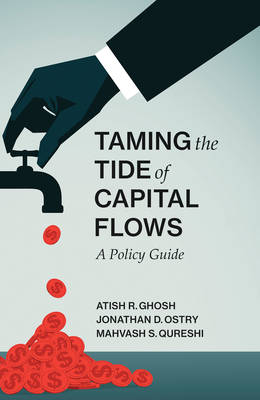
- Afhalen na 1 uur in een winkel met voorraad
- Gratis thuislevering in België vanaf € 30
- Ruim aanbod met 7 miljoen producten
- Afhalen na 1 uur in een winkel met voorraad
- Gratis thuislevering in België vanaf € 30
- Ruim aanbod met 7 miljoen producten
Omschrijving
While always episodic in nature, capital flows to emerging market economies have been especially volatile since the global financial crisis. After peaking at $680 billion in 2007, flows to emerging markets turned negative at the onset of crisis in 2008, then rebounded only to recede again during the U.S. sovereign debt downgrade in 2011. Since then, flows have continued to swing wildly, leaving emerging market policy makers wondering whether they can put in place policies during the inflow phase that will soften the blow when flows subsequently recede. This book offers the first comprehensive treatment of policy measures intended to help emerging markets contend with large and volatile capital flows.
The authors, all IMF experts, explain that, in the spirit of liberalization and deregulation in the 1980s and 1990s, many emerging market governments eliminated capital inflow controls along with outflow controls. By 2012, however, capital inflow controls were again acknowledged as legitimate policy tools. Focusing on the macroeconomic and financial-stability risks associated with capital flows, the authors combine theoretical and empirical analysis to consider the interaction between monetary, exchange rate, macroprudential, and capital control policies to mitigate these risks. They examine the effectiveness of various policy tools, discuss the practical considerations and multilateral implications of their use, and provide concrete policy advice for dealing with capital inflows.Specificaties
Betrokkenen
- Auteur(s):
- Uitgeverij:
Inhoud
- Aantal bladzijden:
- 488
- Taal:
- Engels
- Reeks:
Eigenschappen
- Productcode (EAN):
- 9780262037167
- Verschijningsdatum:
- 12/01/2018
- Uitvoering:
- Hardcover
- Formaat:
- Genaaid
- Afmetingen:
- 157 mm x 229 mm
- Gewicht:
- 771 g

Alleen bij Standaard Boekhandel
Beoordelingen
We publiceren alleen reviews die voldoen aan de voorwaarden voor reviews. Bekijk onze voorwaarden voor reviews.









